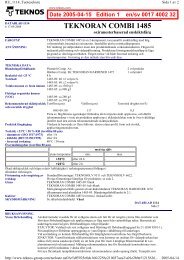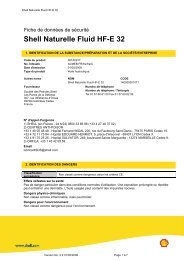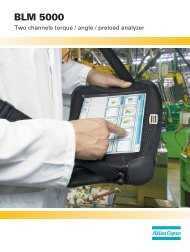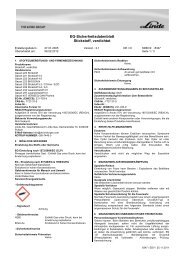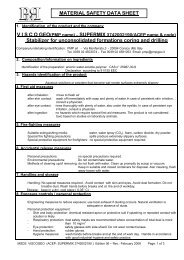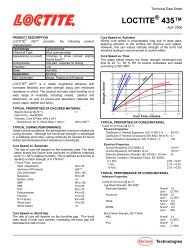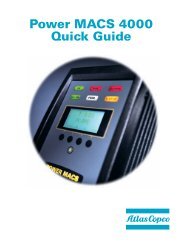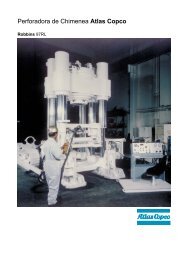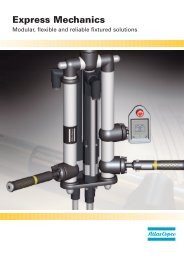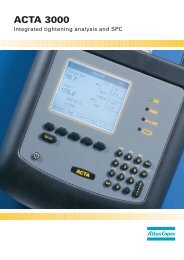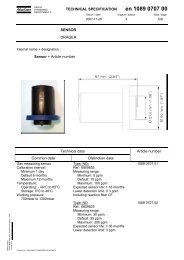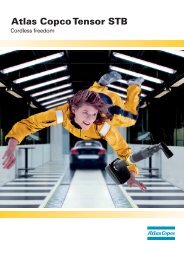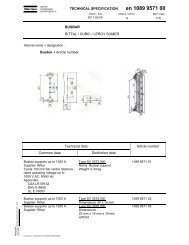Ergonomics - Atlas Copco
Ergonomics - Atlas Copco
Ergonomics - Atlas Copco
Create successful ePaper yourself
Turn your PDF publications into a flip-book with our unique Google optimized e-Paper software.
44<br />
SHoCK reaCtion<br />
These tools do not give any shock reaction.<br />
ViBration<br />
There are at least three sources of vibra-<br />
tion in a percussive tool: the oscillating<br />
force that drives the piston, the shock wave<br />
transmitted to the machine from the chisel,<br />
and the vibration of the workpiece trans-<br />
mitted back to the machine. These sources<br />
can be counteracted at the design stage<br />
as described in the chapter Evaluation of<br />
Power Tools: Vibration.<br />
noiSe<br />
The basic principle of percussive tools is to<br />
create a shock wave that travels down the<br />
chisel or die to strike the casting or rivet with<br />
enough force to cause plastic deformation. The<br />
shock wave has a duration of less than 100 µs.<br />
This process involves very high frequencies<br />
and when these hit a structure many natural<br />
frequencies are excited, emitting broad band<br />
noise. High forces give high noise levels.<br />
DUSt anD oil<br />
Chipping and rust cleaning can create a<br />
lot of dust. In other words, the operator’s<br />
exposure to dust depends very much on the<br />
type of work in progress. The machine can<br />
be equipped with a dust collector connected<br />
to a spot-suction system.<br />
Percussive tools require very little lubri-<br />
cation since the piston moves back and forth<br />
in a very smooth cylinder without gener-<br />
ating heat. Only a minimal amount of oil<br />
leaves the tool with the exhaust air.



